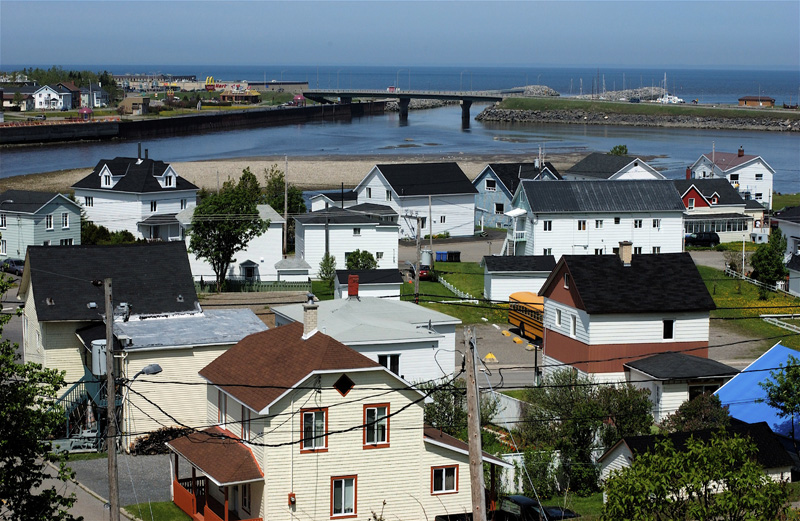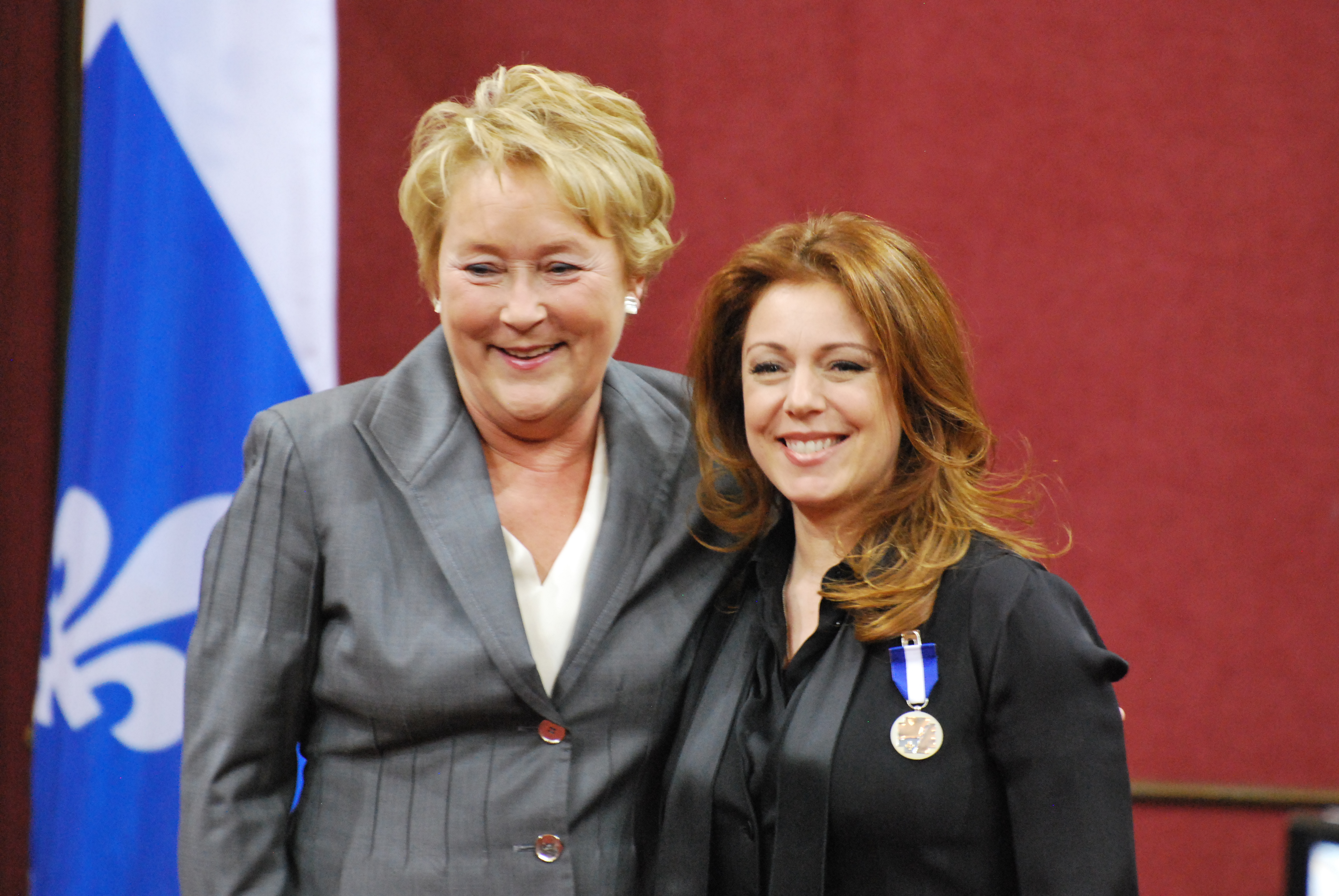|
Matane Regional County Municipality, Quebec
La Matanie () is a regional county municipality, located in the Bas-Saint-Laurent region of Quebec, in Canada. From January 1, 1982, to March 9, 2013, it was known as Matane. The county seat is the city of Matane. Subdivisions There are 12 subdivisions within the RCM: ;Cities & towns (1) * Matane ;Municipalities (7) * Baie-des-Sables * Grosses-Roches * Les Méchins * Sainte-Félicité, Bas-Saint-Laurent, Sainte-Félicité * Sainte-Paule, Quebec, Sainte-Paule * Saint-René-de-Matane * Saint-Ulric ;Parishes (3) * Saint-Adelme, Quebec, Saint-Adelme * Saint-Jean-de-Cherbourg * Saint-Léandre, Quebec, Saint-Léandre ;Unorganized territory (1) * Rivière-Bonjour, Quebec, Rivière-Bonjour Demographics Population Language Transportation Access routes Highways and numbered routes that run through the municipality, including external routes that start or finish at the county border: *Autoroutes **None *Principal highways ** ** *Secondary highways ** *External routes ... [...More Info...] [...Related Items...] OR: [Wikipedia] [Google] [Baidu] |
Regional County Municipality
The term regional county municipality or RCM (, , MRC) is used in Quebec, Canada to refer to one of 87 county-like political entities. In some older English translations they were called county regional municipality. Regional county municipalities are a supralocal type of regional municipality, and act as the local municipality in Unorganized area#Quebec, unorganized territories within their borders. The system of regional county municipalities was introduced beginning in 1979 to replace the List of former counties of Quebec, historic counties of Quebec. In most cases, the territory of an RCM corresponds to that of a Census geographic units of Canada, census division; however, there are a few exceptions. Some local municipalities are outside any regional county municipality (''hors MRC''). This includes some municipalities within Urban agglomerations in Quebec, urban agglomerations and also some aboriginal lands, such as Indian reserves that are enclaves within the territory of ... [...More Info...] [...Related Items...] OR: [Wikipedia] [Google] [Baidu] |
Sainte-Paule, Quebec
Sainte-Paule () is a municipality in Quebec, Canada. History The first inhabitants of this territory settled in 1912. However, a sawmill had already been built here in 1897. In the past, the area was called Colonie Val-Joubert in honour of Louis-Philippe Joubert, an influential lumber merchant from Sayabec who settled Sainte-Paule in 1903. Today, the name of Sainte-Paule's primary school is Val-Joubert. The Sainte-Paule Catholic mission was founded in 1923. The post office was opened in 1938 under the name Sainte-Paula. The caisse populaire was founded on September 15, 1945. The parish was canonically erected in 1948. The municipality of Sainte-Paule was officially founded on January 1, 1968 from unorganized territory. On June 14, 1968, the caisse populaire was closed. Demographics Population See also * List of municipalities in Quebec __FORCETOC__ Quebec is the Population of Canada by province and territory, second-most populous province in Canada with 8,501 ... [...More Info...] [...Related Items...] OR: [Wikipedia] [Google] [Baidu] |
Isabelle Boulay
Isabelle Boulay, (; born 6 July 1972) is a Canadian singer. Biography Born in Sainte-Félicité, Quebec, where her parents owned a restaurant, Boulay moved to the nearby city of Matane at the start of her adolescence, and studied literature at Cégep Limoilou. In 1988, her friends signed her up, without her knowledge, for a singing contest in Matane, where she made the acquaintance of Josélito Michaud, who later became her agent. In 1990, at the Petite-Vallée song festival, she won an award for her performance of "Les gens de mon pays" (Gilles Vigneault). The following year, in 1991, she won the Granby Song Festival for her renditions of "Amsterdam" (Jacques Brel) and "Naufrage" ( Dan Bigras). She was also invited to take part in the festival Les FrancoFolies de Montréal. In 1992, she performed in France at the Théâtre Dejazet, introducing Bill Deraime. In 1993, she represented Radio Canada at the "Truffe de Périgueux" festival held in Périgord, France, and was aw ... [...More Info...] [...Related Items...] OR: [Wikipedia] [Google] [Baidu] |
Canada 2011 Census
The 2011 Canadian census was a detailed enumeration of the Canadian population on May 10, 2011. Statistics Canada, an agency of the Canadian government, conducts a nationwide census every five years. In 2011, it consisted of a mandatory short form census questionnaire and an inaugural National Household Survey (NHS), a voluntary survey which replaced the mandatory long form census questionnaire; this substitution was the focus of much controversy. Completion of the (short form) census is mandatory for all Canadians, and those who do not complete it may face penalties ranging from fines to prison sentences. The Statistics Act mandates a Senate and/or House of Commons (joint) committee review of the opt-in clause (for the release of one's census records after 92 years) by 2014. The 2011 census was the fifteenth decennial census and, like other censuses, was required by section 8 of the '' Constitution Act, 1867''. As with other decennial censuses, the data was used to adjust fe ... [...More Info...] [...Related Items...] OR: [Wikipedia] [Google] [Baidu] |
Canada 2006 Census
The 2006 Canadian census was a detailed enumeration of the Canadian population. Census day was May 16, 2006. The following census was the 2011 census. Canada's total population enumerated by the 2006 census was 31,612,897. This count was lower than the official July 1, 2006 population estimate of 32,623,490 people. The previous census was the 2001 census and the following census was in 2011 census. Summary Over 12.7 million households, 32.5 million people were expected to be counted. Canada Post delivered census forms by mail to 70% of the country, primarily residents in urban areas. Census enumerators delivered to the remaining 30% of households. Every fifth home received the long questionnaire (53 questions versus 8 questions on the short form). For the first time, Canadian residents were able to go online to fill in their forms. Statistics Canada expected approximately 20% of households to file their surveys electronically. Persistent census staff are contacting tardy ho ... [...More Info...] [...Related Items...] OR: [Wikipedia] [Google] [Baidu] |
Canada 2001 Census
The 2001 Canadian census was a detailed enumeration of the Canadian population. Census day was May 15, 2001. On that day, Statistics Canada attempted to count every person in Canada. The total population count of Canada was 30,007,094. This was a 4% increase over 1996 census of 28,846,761. In contrast, the official Statistics Canada population estimate for 2001 was 31,021,300. This is considered a more accurate population number than the actual count. The previous census was the 1996 census and the following census was in 2006 census. Canada by the numbers A summary of information about Canada. Census summary Canada has experienced one of the smallest census-to-census growth rates in its population. From 1996 to 2001, the nation's population increased only 4.0%. The census counted 30,007,094 people on May 15, 2001, compared with 28,846,761 on May 14, 1996. Only three provinces and one territory had growth rates above the national average. Alberta's population soar ... [...More Info...] [...Related Items...] OR: [Wikipedia] [Google] [Baidu] |
Canada 1996 Census
The 1996 Canadian census was a detailed enumeration of the Canadian population. Census day was May 14, 1996. On that day, Statistics Canada attempted to count every person in Canada. The total population count of Canada was 28,846,761. This was a 5.7% increase over the 1991 census of 27,296,859. The previous census was the 1991 census and the following census was in 2001 census. Canada by the numbers A summary of information about Canada. Population by province Demographics Mother tongue Population by mother tongue of Canada's official languages: Aboriginal peoples Population of Aboriginal peoples in Canada: Ethnic origin Population by ethnic origin. Only those origins with more than 250,000 respondents are included here. This is based entirely on self reporting. Visible minorities Age Population by age: See also * List of population of Canada by years * Demographics of Canada * Ethnic groups in Canada * History of immigration to Canada * Population ... [...More Info...] [...Related Items...] OR: [Wikipedia] [Google] [Baidu] |
Rivière-Bonjour, Quebec
Rivière-Bonjour () is an unorganized territory in the Bas-Saint-Laurent region of Quebec, Canada. A large part of the territory is part of the Matane Wildlife Reserve. Other portions of the territory are partially within the Gaspésie National Park, , and Zec de Cap-Chat. Outdoor recreation and forestry are the main activities. The eponymous is a long stream roughly in the centre of the territory that has its source at the south-eastern slopes of the Chic-Choc Mountains, including the high . The stream joins the Matane River at Matane Lake. Demographics Population See also * List of unorganized territories in Quebec The following is a list of unincorporated areas (''territoires non organisés'') in Quebec. There are no unorganized territories in the following administrative regions: Centre-du-Québec, Chaudière-Appalaches, Estrie, Laval, Montérégie, Mont ... References External links {{DEFAULTSORT:Riviere-Bonjour, Quebec Unorganized territories in ... [...More Info...] [...Related Items...] OR: [Wikipedia] [Google] [Baidu] |
Saint-Jean-de-Cherbourg
Saint-Jean-de-Cherbourg () is a parish municipality in the Canadian province of Quebec, located in La Matanie Regional County Municipality. Geography Climate Demographics In the 2021 Census of Population conducted by Statistics Canada, Saint-Jean-de-Cherbourg had a population of living in of its total private dwellings, a change of from its 2016 population of . With a land area of , it had a population density of in 2021. Mother tongue: * English as first language: 0% * French as first language: 100.0% * English and French as first language: 0% * Other as first language: 0% See also * List of parish municipalities in Quebec This is a list of municipalities that have the Quebec municipal type of parish municipality (''paroisse'', code=P), an administrative division defined by the Ministry of Municipal Affairs, Regions and Land Occupancy. The ''Commission de topony ... References External links * Parish municipalities in Quebec Incorporated plac ... [...More Info...] [...Related Items...] OR: [Wikipedia] [Google] [Baidu] |

